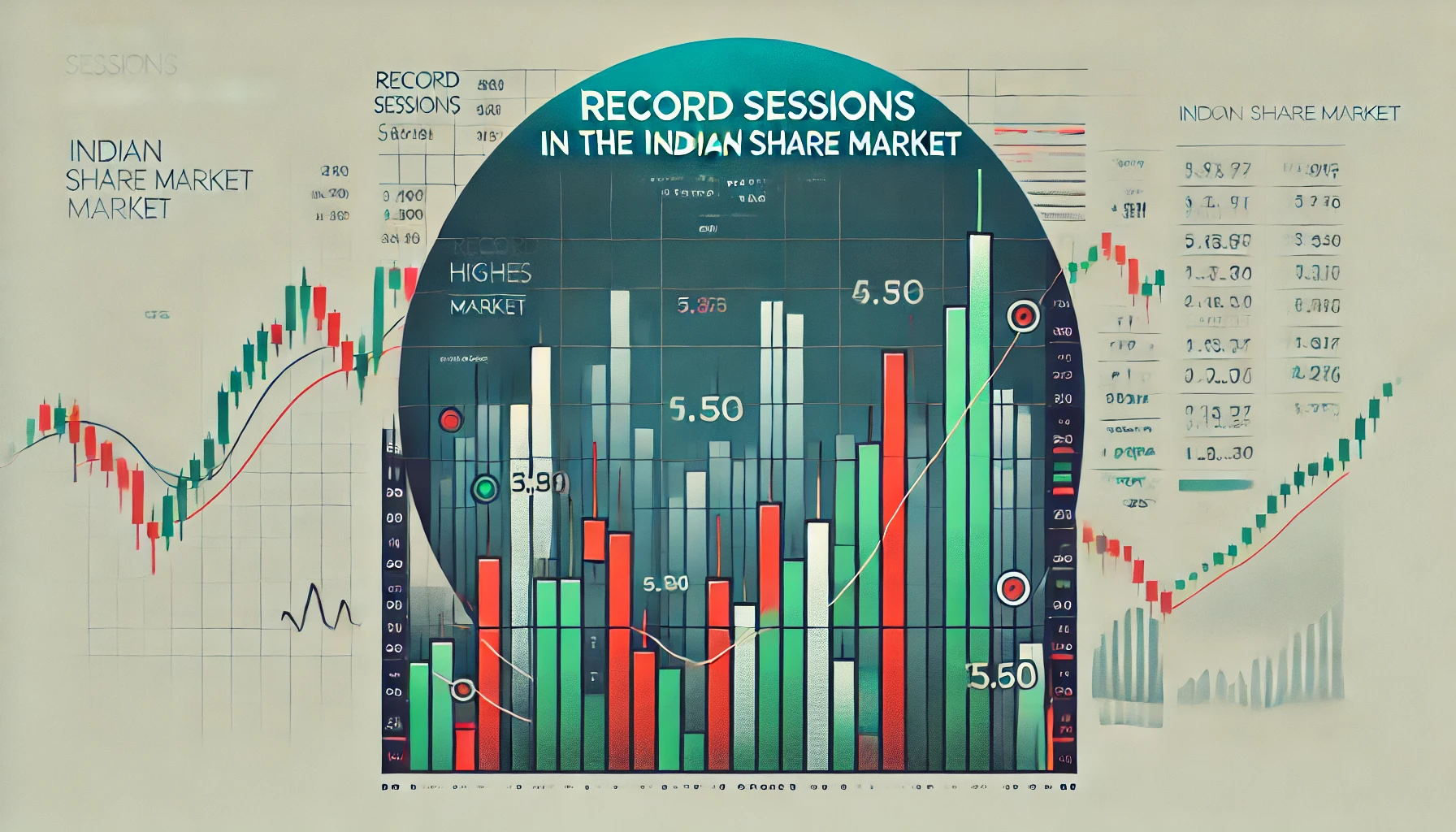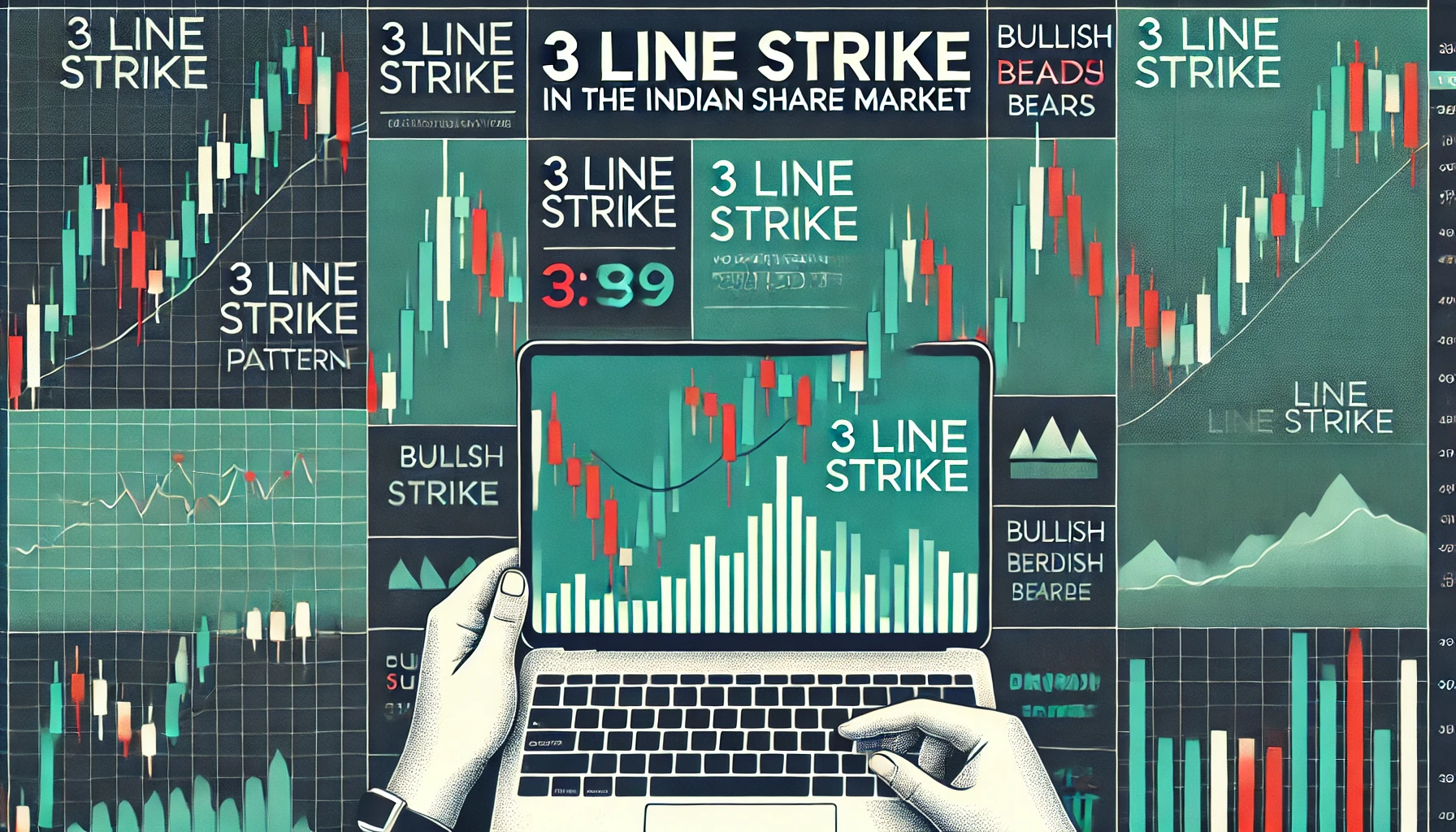The Indian share market is a dynamic and volatile space where major highs and lows create what are referred to as record sessions. These are the trading sessions where stock market indices like the Nifty 50 or Sensex reach unprecedented highs or notable lows. Understanding the impact of these sessions can help traders and investors make more informed decisions, capitalize on emerging trends, and manage risks effectively.
In this comprehensive guide, we will explore the concept of record sessions in the Indian share market, analyze historical data to illustrate significant record-breaking moments, and discuss strategies that traders can use to navigate these impactful sessions.
1. What Are Record Sessions?
A record session in the stock market refers to a trading session in which the market index reaches a new all-time high or low. This can happen when indices like the Nifty 50 or BSE Sensex surpass their previous peak levels or fall to new lows. These sessions are significant because they reflect underlying market sentiment, driven by factors such as macroeconomic indicators, corporate earnings, government policies, or global events.
Key Characteristics of Record Sessions:
- New Highs or Lows: The market reaches levels that surpass previous peaks or troughs.
- Increased Volatility: Record sessions often bring heightened volatility, as market participants react to breaking news or economic data.
- High Trading Volume: These sessions usually witness higher-than-average trading volume, reflecting the heightened interest and activity from investors.
Example in the Indian Stock Market:
On 12th October 2021, the Nifty 50 index recorded an all-time high of 18,604.45 points, reflecting a significant record session driven by strong corporate earnings and economic recovery.
2. Factors Influencing Record Sessions in the Indian Share Market
Record sessions don’t occur in isolation—they are influenced by a range of factors. Understanding these factors can help traders anticipate when record sessions might occur and prepare accordingly.
Macroeconomic Indicators:
Key indicators such as GDP growth, inflation rates, and industrial production can significantly impact market sentiment. For example, when India’s GDP shows stronger-than-expected growth, it can fuel bullish sentiment, leading to record-breaking highs.
Corporate Earnings:
Quarterly earnings reports from major companies listed on the Nifty 50 or Sensex can influence market movements. Better-than-expected earnings often push the market to new highs, while disappointing results may lead to lows.
Global Market Trends:
The Indian stock market is not immune to global trends. Developments in international markets, such as policy changes by the US Federal Reserve, oil price fluctuations, or geopolitical tensions, can trigger record sessions in the Indian market.
Government Policies:
Changes in taxation, foreign direct investment (FDI) policies, and interest rate adjustments by the Reserve Bank of India (RBI) often influence investor sentiment, resulting in market rallies or declines.
3. Historical Record Sessions in the Indian Share Market
To understand the impact of record sessions, let’s look at some of the most notable record-breaking moments in Indian stock market history.
| Date | Index | Record Level | Driving Factors | Market Reaction |
|---|---|---|---|---|
| 12th Oct 2021 | Nifty 50 | 18,604.45 points | Strong corporate earnings, economic recovery post-COVID | Bullish sentiment, rally |
| 19th May 2020 | BSE Sensex | 30,196.17 points | Positive global cues, easing lockdown measures | Sharp recovery, buying spree |
| 24th March 2020 | Nifty 50 | 7,610.25 points | COVID-19 pandemic, global market crash | Bearish sentiment, major sell-off |
| 28th Aug 2018 | Nifty 50 | 11,738.50 points | US-China trade war easing, foreign inflows | Record highs, optimistic trading |
These record sessions highlight how diverse factors can influence market movements, leading to new highs or lows. The examples show the impact of macroeconomic conditions, corporate earnings, and global trends on market sentiment.
4. Analyzing Record Highs and Lows: What They Mean for Traders
Record Highs:
When the market reaches a new high, it generally indicates strong bullish sentiment and optimism among investors. However, traders should be cautious as record highs can also signal overbought conditions, where the market might be poised for a correction.
- Opportunity: Traders can ride the momentum by taking long positions during record highs, especially when backed by strong economic data.
- Risk: Record highs can lead to corrections, where the market retreats after an overextended rally. Stop-loss orders can help mitigate this risk.
Record Lows:
Record lows usually reflect bearish sentiment, driven by negative macroeconomic news, poor corporate performance, or global uncertainty. While these sessions may seem discouraging, they can also present buying opportunities for long-term investors.
- Opportunity: Record lows allow traders to buy undervalued stocks with strong fundamentals, positioning themselves for potential recovery.
- Risk: The market could continue falling after a record low, especially during a bear market or economic downturn.
5. Trading Strategies for Record Sessions
Navigating record sessions requires a well-planned strategy to capitalize on market movements while managing risks effectively. Below are some trading strategies for record highs and lows:
Strategy for Record Highs:
- Ride the Momentum: During a record high, traders can follow the momentum and enter long positions in high-performing sectors like IT, FMCG, or banking. Monitoring trading volume can confirm if the rally is sustainable.
- Use Technical Indicators: Indicators like the Relative Strength Index (RSI) or Bollinger Bands can help determine whether the market is overbought. An RSI above 70 may signal that a correction is due, prompting traders to take profits or set stop-losses.
Strategy for Record Lows:
- Buy on Dips: Record lows can be buying opportunities for fundamentally strong stocks. Traders can use value investing principles to accumulate shares at a lower price.
- Wait for Confirmation: When the market hits a record low, it’s crucial to wait for confirmation of a reversal before entering a position. Technical indicators like moving averages or the MACD can help identify a potential bottom.
6. Impact of Record Sessions on Investor Sentiment
Record sessions have a profound impact on market sentiment, shaping how traders and investors perceive market conditions.
Bullish Sentiment:
When the market reaches new highs, it boosts investor confidence, leading to more buying activity. Retail investors, in particular, may enter the market due to fear of missing out (FOMO), driving prices even higher. However, traders should be cautious of potential market corrections after extended rallies.
Bearish Sentiment:
Record lows can trigger panic selling as investors rush to exit their positions. However, long-term investors may see this as an opportunity to accumulate quality stocks at discounted prices. Understanding the reasons behind the record low is crucial for making informed decisions.
7. Backtesting Record Sessions in the Indian Share Market
Backtesting historical data on record sessions helps traders understand the market’s behavior after new highs or lows are reached. Below is a summary of backtesting results for record highs and lows on the Nifty 50 over the last five years.
| Record Type | Total Occurrences | Market Reaction (Positive) | Success Rate (%) |
|---|---|---|---|
| Record High | 18 | 14 | 77% |
| Record Low | 12 | 9 | 75% |
8. Preparing for Future Record Sessions: Key Takeaways
To successfully navigate future record sessions in the Indian share market, traders should:
- Stay updated with global and domestic macroeconomic news.
- Monitor quarterly corporate earnings, especially for large-cap companies.
- Use technical analysis tools to confirm whether record sessions are backed by sustainable trends.
- Set stop-losses to manage risk during volatile market conditions.
9. Conclusion: Capitalizing on Record Sessions in the Indian Share Market
Record sessions in the Indian share market are significant events that present both opportunities and risks. By understanding the factors driving these sessions and using well-planned trading strategies, traders can navigate the highs and lows of the market with confidence. Whether it’s riding the momentum during a record high or finding value during a record low, record sessions offer valuable insights into market behavior and can help traders capitalize on emerging trends.

What is the TRIN stock market indicator?
The TRIN (Trading Index), also referred to as the Arms Index, is a technical analysis …

Record Sessions
The Indian share market is a dynamic and volatile space where major highs and lows …

3 Line Strike
Candlestick patterns are a vital tool for traders in the stock market, offering insights into …

3 White Soldiers and 3 Black Crows
Candlestick patterns are a key element of technical analysis in stock trading, offering clear signals …

Gapping Doji
Candlestick patterns are a critical part of technical analysis in the stock market, providing traders …

3 Windows
Candlestick patterns are a vital part of technical analysis, offering traders and investors insights into …

2 Gapping Candles
In the fast-paced world of the Indian stock market, technical analysis plays a crucial role …

3 Inside Down and Up
Candlestick patterns are powerful tools in the world of technical analysis, offering traders insight into …

Bullish and Bearish Belt Hold
Technical analysis is an essential part of trading in the Indian share market. Candlestick patterns, …

Piercing and Dark Cloud Cover
In the ever-evolving Indian stock market, candlestick patterns are crucial for traders aiming to predict …

Double Doji
Candlestick patterns have long been a favored tool for technical traders to forecast market movements. …

Rising and Falling Windows
In the world of technical analysis, candlestick patterns are vital tools for traders to anticipate …

Tweezer Top and Bottom
In the fast-paced world of the Indian share market, traders use technical analysis tools to …

Morning Star and Evening Star
In the Indian share market, technical analysis is a valuable tool for traders aiming to …

Hammer and Hanging Man
The Indian stock market offers a wealth of opportunities for traders who understand technical analysis. …

Shooting Star and Inverted Hammer
The Indian stock market, with its dynamic nature, presents various opportunities for traders and investors. …

Last Engulfing
The Indian share market is filled with patterns that can help traders make informed decisions. …

Harami
In the world of stock market analysis, candlestick patterns offer valuable insights into price movements. …

Engulfing
The Indian share market is known for its volatility, and traders often rely on technical …

Marubozu
Candlestick patterns are powerful tools used by traders in the Indian share market to analyze …

Spinning Top
The Indian share market, like any other, experiences constant fluctuations due to a multitude of …

Doji
The Indian share market is dynamic, with investors using various tools to gauge stock performance. …

Double Top
In the world of technical analysis, chart patterns are valuable tools that help traders spot …

Tweezer
In the Indian share market, where volatility and price fluctuations are part of daily trading, …

Harami
In the world of technical analysis, candlestick patterns are powerful tools that help traders make …

Heiken-Ashi
Navigating the Indian share market can be challenging due to the inherent volatility and market …

Ichimoku
In the world of technical analysis, few indicators offer the comprehensive insights that the Ichimoku …

Value Charts
In the ever-changing landscape of the Indian share market, traders and investors need tools that …

Money Flow Index
In the Indian share market, identifying trends, understanding momentum, and assessing volume are critical components …

Aroon
In the fast-paced world of the Indian share market, identifying market trends and spotting reversals …

Gator Indicator
In the Indian share market, success is largely dependent on identifying the right trends and …

Adaptive Moving Average
In the dynamic and often volatile Indian share market, traders and investors continuously seek tools …

Coppock Curve
In the ever-evolving landscape of the Indian share market, traders and investors rely on technical …

Premier Stochastic Oscillator
In the fast-paced world of the Indian share market, technical indicators are indispensable tools that …

Dynamic RSI
The Indian share market is known for its volatility, with frequent shifts in trends influenced …

Vortex
The Indian share market offers plenty of opportunities for traders and investors to capitalize on …

Glitch Index
The Indian share market, like all financial markets, is prone to moments of irregular behavior—unexpected …

Triple Exponential Average
Navigating the Indian share market requires traders to use effective tools that help them track …

Know Sure Thing
The Indian share market presents countless opportunities for traders and investors, but making accurate decisions …

Mass Index
The Indian share market is volatile, with price trends constantly shifting due to numerous factors. …


















